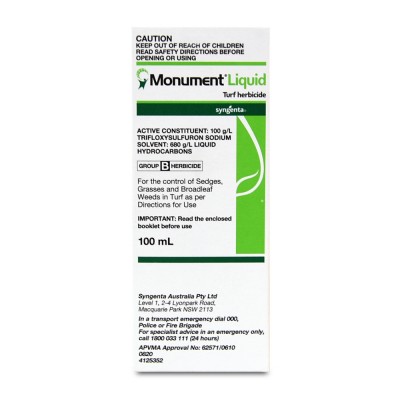Insecticides and Fungicides are commonly used terms when it comes to lawn care. In this blog, we look at exactly what insecticides and fungicides are, the different types available and when you should use them on your lawn.
Insecticides
When your lawn is getting damaged by an infestation of insects and bugs, you may need to look at using an insecticide to help stop and prevent further damage from occurring.
It is important to note, insects are a normal part of your garden and lawns ecosystem. In fact, many insects like earthworms, praying mantises, bees and lady beetles are beneficial for not just your lawn but your garden’s ecosystem too! So, if you do see bugs and insects in your lawn an insecticide is not always needed.
Some of the main damage causing insects to lawns are infestations of army worm, lawn grubs and mole crickets.
Different types of insecticides
There are a few different types of insecticides available with different active ingredients. Some of the main active ingredients used to stop damage causing insects in lawns are Bifenthrin, Esfenvelerate, or Beta-Cyfluthrin. These types of insecticides are designed to get a quick knockdown.
Acelepryn GR – it’s safe for bees!
There are also insecticides available that will prevent damage causing insects. These products contain the active Acelepryn.
When to apply
If you only notice a few insects like beetles and worms in your lawn, in most cases an insecticide is not needed.
If there is an infestation of damage causing insects like armyworm or lawn grubs, it is best to apply a fast-acting insecticide as soon as possible. To ensure you have fully removed the damage causing insect repeated applications after 7-10 days may be needed to ensure you are treating the entire lifecycle.
When using Acelepryn it is best to apply at any 6-month intervals for season round grub prevention. As a general guide, apply in September/October and March/April for a full year’s worth of protection.
Product recommendations
For fast acting insecticides we recommend using Battle Insecticide which is a concentrate for mixing in a knapsack.
For a preventative, we recommend using Grub Guard Ultimate, Acelepryn GR and Acelepryn Liquid. Acelepryn works by targeting a specific muscle receptor that is common with damaging causing insects. Other non-target organisms like bees, earthworms, birds, fish, dogs, cats, and mammals don’t use the same muscle receptors, making it one of the safest insecticides on the market!
When applying insecticides, ensure you are following the correct application rates and instructions.
Fungicides
Fungicides are used to help stop fungi and diseases from growing. For the most part, fungal diseases are not common in residential lawns. Fungal diseases can appear with the conditions are right, usually damp, and humid conditions. They can also appear from over watering, soil compaction, poor mowing habits and incompatible grass varieties for your area.
For the most part fungal diseases can be avoided with regular mowing, irrigation management, shade management and aeration. If a disease doesn’t clear up after this and the weather is clear, a fungicide may be needed.
Different types of fungicides
There are 2 different types of fungicides available, contact and systemic.
Contact fungicides will treat the fungus that is currently there. They won’t be absorbed by the leaf and are best used for the control of foliar diseases.
A systemic fungicide will treat and prevent fungi and diseases. Systemic fungicides are absorbed by the plant and can kill the spores of the fungus, which helps prevent the fungi.
When to apply
When fungi or disease is present, the first call of action is to improve the environment. This can include reducing shade, mowing regularly, watering only in the morning and aerating. In most cases fungi and diseases will go away on their own as the environmental conditions improve. If the fungi or disease is still present in the following weeks a fungicide may then be required.
Product recommendations
When using fungicides it is always best to check if the product you are using is labelled to stop the specific disease or fungi in your lawn.
For contact fungicides a great all-round option is Mancozeb DG. This fungicide controls Helminthosporium, Fusarium, Rhizoctonia, Grey Leaf Spot.
For a systemic fungicide we recommend using Heritage Maxx. Heritage Maxx provides control and prevention of a broad-spectrum turf diseases including Pythium, Anthracnose, Brown Patch and Spring Dead Spot. It will also provide consistent protection of new growth for up to 28 days after application.
For more information on insecticides, fungicides, and more lawn care products, check out our other blogs here.



